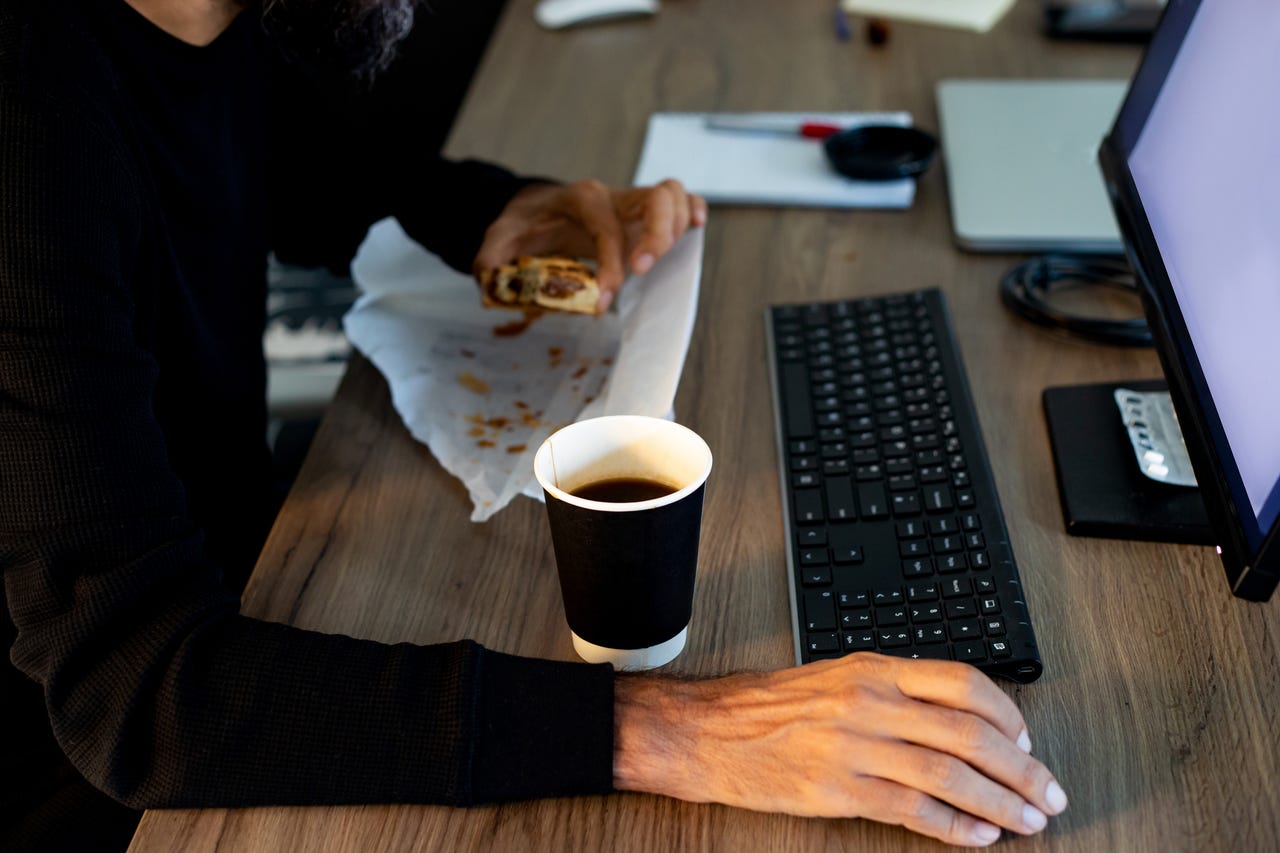
Getty Images
It’s a creepy feeling, isn’t it?
You’re in a store, you buy something and then you get the little screen turned toward you.
It’s the screen that tells you how much you’re about to pay. It’s also the screen that wonders how much you’d like to tip.
The store salesperson looks at you. You try not to look at them. You wonder if you can discreetly skip the tip.
You wonder, in fact, if you can click on “no tip” and instantly turn around and leave. You wonder how you’ll feel if you do that.
You wonder how the salesperson will feel if you ever choose to walk into the store again.
Also: Remote work habits are changing again, but that doesn’t mean employees are less engaged
I don’t know where the digital tipping first started. I do know that it’s proliferated to such a degree that I’m sometimes astonished that a particular store thinks I might like to tip the people who work there.
Starbucks goes digital
The latest to embrace digital tipping is Starbucks.
Once upon a time, I used to go to Starbucks most days. I’d tip in cash because I knew the baristas there, and we always used to chat. And, if one paid with a credit card and had no cash, there was no way to tip.
However.
What if you now order at the drive-thru, roll along to the window, and get handed your coffee and bacon-gouda sandwich? Is that worth a tip? If so, how much?
It seems, you see, that the very second you get your credit card out, you’re now asked if you want to tip. This has reached such a stage where one alleged Starbucks barista turned to TikTok to admit she felt so embarrassed by the new system that she clicked on “no tip” before handing the screen to the customer.
Also: Taco Bell just tried to excite customers with a new kind of drive-thru
In a simmering Reddit thread, a commenter offered: “I remembered when I worked at Panera and they finally implemented the credit card tips. We had the same problem and it was awkward as hell because no one ever had to deal with it before. People would literally read out “Would you like to leave a tip” and say out loud, “No, I would not!” Like… what… ok that wasn’t awkward as hell. I don’t care if you leave me a tip or not but don’t make it weird.”
While a (presumably) Starbucks employee mused of the new system: “I keep saying, ‘Hey we got a new card system so I’m gonna hand this out to you and it’ll ask you a quick question. The cord is super long so you can have it in the warmth of your car!’ you know in that obnoxious customer service voice and almost everyone fully grabs it from me.”
Tip one for the team?
Reports suggest one reason for the change is that Starbucks is undergoing something of a unionization drive and credit card tipping is one of the things unions demand.
But it’s easy to conclude that many employers view this technology as a way of keeping employee wages down and hoping that customers will make up the difference by tipping.
Yet some baristas defend the new notion. One, for example, Tweeted: “As a Starbucks barista, the tip goes to a pool and that is distributed among all the Starbucks partners at the store. Sure, the person taking your payment might not have made your drink, but the tip is for the whole team. We make every drink from scratch so please consider this.”
All this may be true. But Starbucks isn’t cheap, and the company often crows about the marvelous way it treats its staff.
I contacted Starbucks to ask for its feelings and will update, should I hear.
It’s odd, bordering on humorous, how Starbucks — and many other fine fast-food chains — are doing everything they can to minimize human interaction. Why, Starbucks was a pioneer in mobile ordering, which leads to a splendidly impersonal result.
Also: Mushroom meat and robot chefs: Chipotle’s vision for the future of fast food
Perhaps the most fundamental question, though, is where this will all stop. Will you go to buy a fine motorized lawn mower for, say, $700 and be presented with a screen that asks whether you want to tip 5% or 10%?
Will you buy an iPhone and MacBook for thousands of dollars and get a screen that suggests, oh, a 15% tip?
Some of this is, of course, cultural custom. In Europe, for example, the mere idea of tipping feels strange. Tipping on a retail transaction seems even stranger.
But tipping for talking to someone through a speaker and then being handed a cup? What are you really tipping for? The staff or the technology?